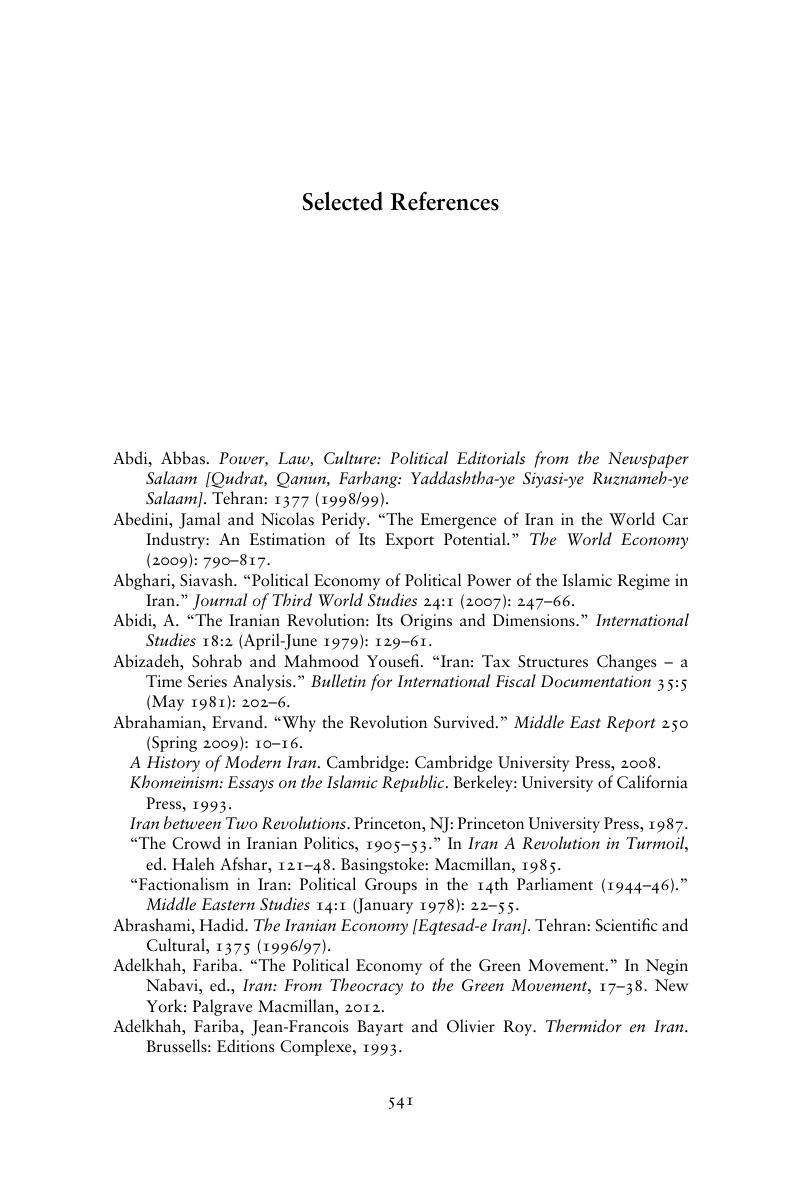Book contents
- Frontmatter
- Contents
- 1 Introduction
- 2 The Prelude: The Political Economy of Prerevolutionary Iran
- 3 The Economics of Upheaval, 1977–1980
- 4 The Cost of the Sacred Defense, 1980–1989
- 5 The Reconstruction Jihad, 1989–1997
- 6 Ayatollah Gorbachev: Reform within the Red Lines, 1997–2005
- 7 Populism, Version 2.0: The Ahmadinejad Era, 2005–2013
- 8 Energy and the Islamic Republic
- 9 Sanctions and the Sacred State
- 10 Conclusion
- Appendix
- Selected References
- Index
- References
Selected References
Published online by Cambridge University Press: 05 August 2015
- Frontmatter
- Contents
- 1 Introduction
- 2 The Prelude: The Political Economy of Prerevolutionary Iran
- 3 The Economics of Upheaval, 1977–1980
- 4 The Cost of the Sacred Defense, 1980–1989
- 5 The Reconstruction Jihad, 1989–1997
- 6 Ayatollah Gorbachev: Reform within the Red Lines, 1997–2005
- 7 Populism, Version 2.0: The Ahmadinejad Era, 2005–2013
- 8 Energy and the Islamic Republic
- 9 Sanctions and the Sacred State
- 10 Conclusion
- Appendix
- Selected References
- Index
- References
Summary

- Type
- Chapter
- Information
- Iran's Political Economy since the Revolution , pp. 541 - 578Publisher: Cambridge University PressPrint publication year: 2015



